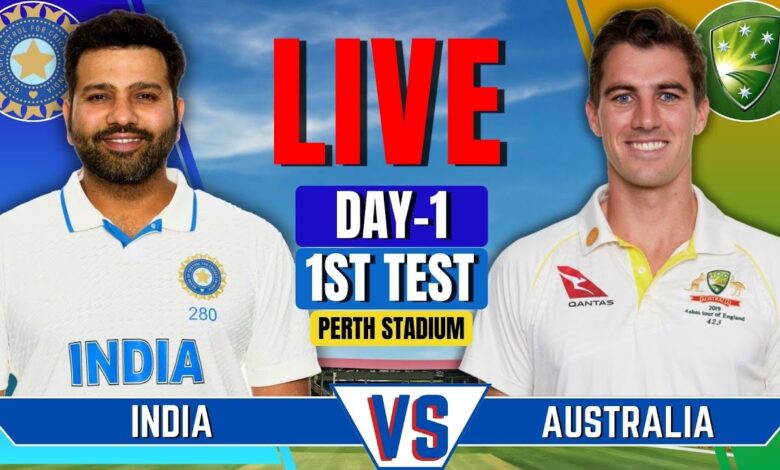Australian Men’s Cricket Team vs India National Cricket Team Timeline: A Rivalry That Defined Eras

The timeline of cricket battles between the australian men’s cricket team vs india national cricket team timeline represents more than just games—it reflects an evolving sports rivalry enriched with history, emotion, and unforgettable moments. From dusty pitches to world-class stadiums, this rivalry has grown into one of the most anticipated and watched duels in world cricket. Two cricketing powerhouses—Australia with its aggressive gameplay and India with its technically sound approach—have tested each other time and again across formats and generations.
What began as a formal Test series in the late 1940s gradually transformed into high-octane, crowd-pulling spectacles that fans around the world eagerly await. Over the decades, this rivalry has not only witnessed iconic innings and nail-biting finishes but also showcased the evolution of global cricket—from traditional five-day Tests to fast-paced T20s. Each timeline phase has contributed something unique, giving fans plenty of drama and history to remember.
In this article, we’ll walk you through the timeline of India vs Australia cricket rivalry—from its humble beginnings to the present-day domination and balance of power. Whether you are a long-time cricket enthusiast or a new fan of the sport, this comprehensive history offers insights, analysis, and a celebration of one of cricket’s finest rivalries.
australian men’s cricket team vs india national cricket team timeline
1. The Early Years: Origins of a Historic Rivalry (1947–1970s)
The rivalry officially began in 1947–48 when India toured Australia for the very first time. The series was historically significant as it marked India’s first overseas Test series post-independence. However, it turned out to be a tough initiation for the Indian side as they were comprehensively outplayed by the Australians, led by the legendary Don Bradman. Australia won the five-match series 4-0, showcasing their dominance and the gap in skill between the two teams at the time.
During this era, Indian players like Lala Amarnath, Vinoo Mankad, and Vijay Hazare displayed glimpses of brilliance, but the overall team struggled to challenge Australia consistently. The pitches, weather, and travel fatigue also played a role, as the infrastructure and training facilities for Indian cricketers were still developing. On the other hand, Australia boasted a well-rounded side and utilized home conditions to their advantage.
Despite being one-sided, these early encounters laid the foundation for a future rivalry. They introduced Indian players to the fast, bouncy pitches of Australia and vice versa. Though India didn’t host Australia until the 1956–57 series, the seeds of competition and mutual respect had already been planted. As the sport grew in popularity across the two nations, fans began to recognize the emotional and sporting value of this budding cricket rivalry.
2. Building the Rivalry: The 1980s and 1990s
By the 1980s, the dynamics of the India-Australia rivalry began to shift. India was no longer seen as a soft opponent, especially after their World Cup win in 1983. This period saw both teams transition into stronger cricketing nations. Allan Border’s gritty leadership for Australia and Kapil Dev’s all-round heroics for India defined the era. Series during this time became more balanced, and individual performances often determined the outcomes.
The 1985 Benson & Hedges World Championship of Cricket in Australia became a turning point. India emerged victorious, defeating Pakistan in the final and Australia in the group stages. It was one of the first major signs that India could succeed in foreign conditions. The decade also saw the emergence of key Indian players like Mohammad Azharuddin and Ravi Shastri, while Australia was shaping its future with Steve Waugh and David Boon.
In the 1990s, the rivalry intensified with the arrival of legends like Sachin Tendulkar and Shane Warne. Tendulkar’s masterclass in Perth (1992) at the age of 18 is still hailed as one of his finest knocks. Meanwhile, Warne’s debut series in India in 1998 ended with a harsh lesson in spin conditions as Tendulkar dominated. These individual battles added spice to the team rivalry. Matches between the two nations started drawing larger audiences, and broadcasters capitalized on the growing fan base. The competitive edge, bolstered by charismatic players, made this phase a golden bridge between tradition and modern cricket.
3. The Modern Era: 2000s to Early 2010s
The 2000s brought a new flavor to the India-Australia rivalry—aggression, mental disintegration, and cricketing excellence. With Sourav Ganguly at the helm, India shed its defensive skin and started challenging Australia on equal terms. Ganguly’s iconic shirt wave at Lord’s and his refusal to bow down to the mighty Australians reflected a cultural shift in Indian cricket. The historic 2001 Test series in India was a landmark. After following on in Kolkata, India, led by Laxman and Dravid, scripted a miraculous win and eventually took the series 2-1.
Australia, under Steve Waugh and later Ricky Ponting, was a world-dominating force. Their 16-match winning streak was broken in that Kolkata Test. While Australia remained dominant, especially at home, India was the only team that consistently challenged them. The 2003–04 series in Australia was another milestone where Rahul Dravid’s heroics earned India a drawn series, which felt like a victory against a near-invincible opponent.
ODI cricket also saw memorable battles during this era. The 2003 World Cup final saw Australia crush India, but encounters in Tri-Series and Champions Trophies often swung both ways. The 2007–08 Test series in Australia was marred by controversies, including the infamous Sydney Test and the “Monkeygate” scandal. Despite the friction, these incidents fueled the fire of competition and made the rivalry one of the fiercest in modern cricket.
4. The New Generation: 2015–2025 Timeline
The last decade has seen the rivalry evolve into a truly global cricketing spectacle. In 2018–19, India, under Virat Kohli, scripted history by winning their first-ever Test series on Australian soil. Despite the absence of Smith and Warner due to bans, the Indian team’s dominance was complete, led by Pujara’s solid batting and Bumrah’s lethal pace. This victory changed perceptions and proved India’s mettle abroad.
However, it was the 2020–21 series that etched India’s name in cricketing folklore. After being bowled out for 36 in Adelaide, India bounced back under the stand-in captain Ajinkya Rahane and won the series 2-1, breaching the “Fortress Gabba” for the first time in over 30 years. With a second-string side and massive injuries, India’s win was hailed as one of the greatest comebacks in Test history.
Australia, too, has undergone transformation, with new leaders like Pat Cummins and emerging stars like Cameron Green. The rivalry remains competitive in white-ball formats as well, with recent T20 World Cups and ODI matches producing thrillers. Technology, DRS, and analytics now influence every decision, making the modern-day rivalry sharper and smarter.
Off the field, the IPL has blurred lines between rivalry and camaraderie, with Australian and Indian players sharing dressing rooms. Yet, whenever they wear national colors, the fierce competitive spirit returns. This era reflects how cricket has evolved both technically and emotionally while preserving the soul of this classic rivalry.
Conclusion
The timeline of the Australian Men’s Cricket Team vs India National Cricket Team rivalry is a story of evolution, courage, and sporting excellence. From one-sided contests in the 1940s to nerve-wracking thrillers in the 2020s, each phase of this journey reflects the changing face of international cricket. While Australia brought grit and aggression, India responded with flair and resilience. Together, they created a legacy filled with iconic moments and unforgettable performances.
As cricket continues to evolve, this rivalry stands tall—proof that passion, competition, and mutual respect can co-exist. The next chapter of this rivalry is already unfolding, and fans across both nations eagerly await what’s next. If history is any indication, the timeline of India vs Australia will only grow richer with time.



